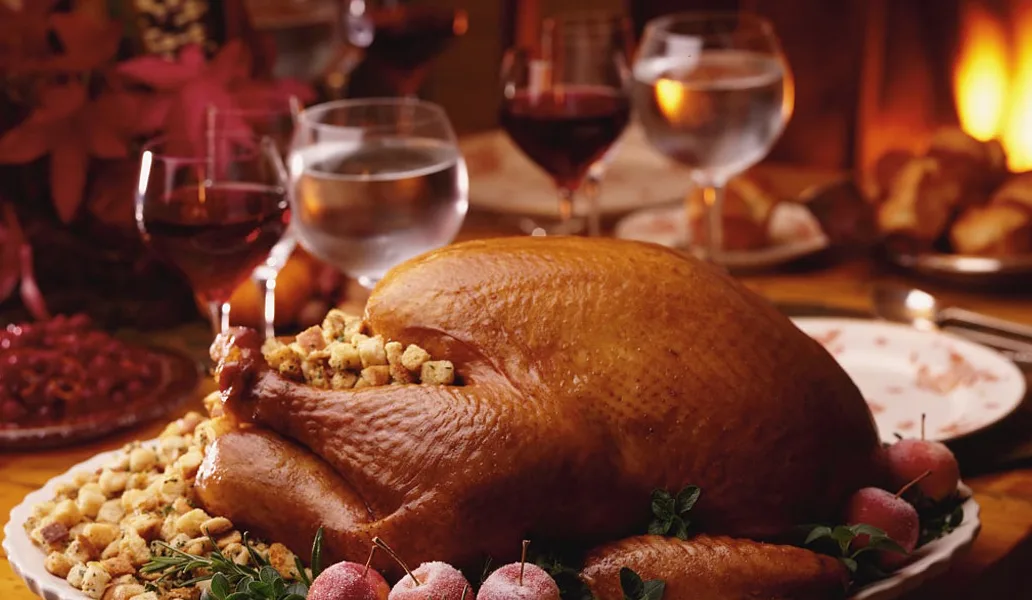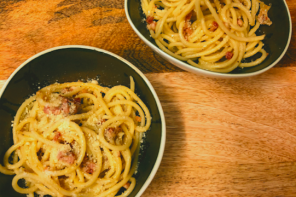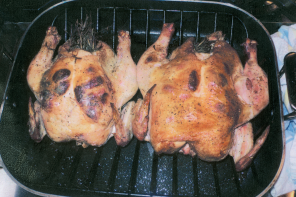How to talk about wine without sounding like a snob… or an idiot.
Every holiday dinner is different. Sometimes, we’re lucky and get to stuff our faces amongst friends until we fall asleep in our chairs. Sometimes we’ve got to fulfill obligations with that side of the family or spend an entire night trying to communicate with somebody’s senile grandparents. ( “No, Mrs. Baker… it’s not George, it’s John.” )
Whether you’ve got an intimate evening or a full family sh**tshow planned, there is one thing that remains a constant at any festive, holiday dinner: wine.
It’s a law of the universe… one brings wine to holiday dinners. There’s just one problem: what if you don’t know anything about wine?
Be still, thy beating heart, we’re here to help you learn.
Here’s a compilation of bits n’ pieces from our educational articles… an intro to the fundamentals AKA just enough to give off the impression that you kind of know what you’re talking about. Print it out and study it on the ride over to Uncle Chris’ house and you’ll become the wine connoisseur of the holiday season in no time. This will make both buying, and talking about wine easier for you, we promise:
variety/cultivar (n)- These terms refer to one specific type of grape with its own unique characteristics. Merlot, for example, is a popular variety from France. There are hundreds and hundreds of grape varieties, though only a fraction of those are produced on a widespread scale. The proper horticultural term for variety is actually ‘cultivar,’ but variety is by far the preferred word.
varietal (adj)- This term describes a wine made exclusively from one single, specified grape variety, as opposed to a blend of several. For example, a bottle of Merlot is a varietal wine because it is made exclusively from the Merlot grape.
blended (adj)- A blended wine, as opposed to a varietal wine, is wine that is made up of two or more specific grape varieties/cultivars. Winemakers combine varieties in order to add layers of flavor and to emphasize the best qualities of different varieties. The 2013 Fiction Red, for example, is a blend of six different varieties: Zinfandel, Tempranillo, Mourvedre, Grenache, Syrah, Touriga Nacional.
region (n)– We all know what the word means, but regions take on a new importance and descriptive use in winespeak. Because wine’s taste is inextricably linked to where it’s from, it’s incredibly helpful to learn about wine-growing regions. Each region has unique characteristics in terms of tradition, varieties, climate, soil and culture that have a huge impact on the way your wine will taste. For example, I’m generally a fan of Bordeaux wines. That is to say the Bordeaux region tends to produce wines with characteristics I enjoy and that differ from, say, the Rioja region in Spain. Once you discover regions that produce wines you like, it becomes much easier to buy and explore wines with confidence.
tannin (n)- A tannin is a biomolecular chemical compound that is produced from grape skins during the winemaking process. Science aside, tannins are generally regarded as the things that control the bitterness, sharpness and dryness of wine. They are most commonly found in red wine, and are known to leave a velvety feeling on the center of the tongue and teeth. When you drink a dry red wine that makes your mouth feel great, it is most likely a tannic wine.
mouth-feel (n)- This one is simple… the way a wine feels in your mouth. Some wines create a dry, velvety or tannic (see above) texture on the tongue and teeth while others might feel wet, smooth, thick, thin, sharp etc…
Is this wine “sweet” or “fruity?”
Many wine drinkers confuse the words ‘sweet’ and ‘fruity.’ We tend to think of fruit as sweet, so a wine that has berry or tropical flavors tempts us to use the term “sweet.” But, for a wine to be sweet by professional standards, it must have lots of actual sugar left intentionally in the juice during the wine making process.
Wines that qualify as sweet are more likely to be desert wines or Ports. Many drinkers who actually want fruity wine find these styles to be too sweet, thick and sugary. A wine that has outward fruit flavors should be referred to as fruity, to avoid confusion with wine that is literally full of sugar.
New World vs. Old World Wine
Old World refers to wines from Europe and certain regions of North Africa. New World refers to “newer” winemaking countries like the US, South America, Australia, and South Africa. Think of old and new as labels of experience: the Old World has been making wine since around 7000 BC, while the New World has only been in the game since about the sixteenth century.
Old World wine is bound by strict regulations: where a grape variety can and cannot be planted, which techniques are allowed, and minimum alcohol contents. These regulations were established in order to maintain minimum standards of quality, but some are saying they’re stifling creativity.
New World is the Wild West, anything goes. New World winemakers are free to plant any grape they want wherever they want and use whatever techniques they want. Like our college days, experimenting can lead to beautiful discoveries, and other times it’s awkward for everyone involved.
Is wine vegetarian and vegan friendly? (For your more conscientious relatives.)
Short answer: nope! In an effort to attain the clearest and smoothest wine possible, young wines undergo a process called fining. Fining agents eliminate any hazy or cloudy appearance in wine. It is through the fining and filtration of wines that animal derived products are often used. Popular fining agents include: bone marrow, casein (a milk protein), chitin (crustacean shell fibers), egg whites, gelatin, fish oil, and more. Sorry tofurkey eaters! It’s not impossible to find unfined wine, but it’s tough, and usually never on the label.
Folks, you could study all of these terms and concepts for the rest of your life and not be an expert. But, with just these fundamentals you should be fully prepared to buy, drink and talk about wine this holiday season without sounding like an idiot… or a snob.








